WELCOME TO STUDIO MC /
Collaborative network for experimanetal spaces, art and objects
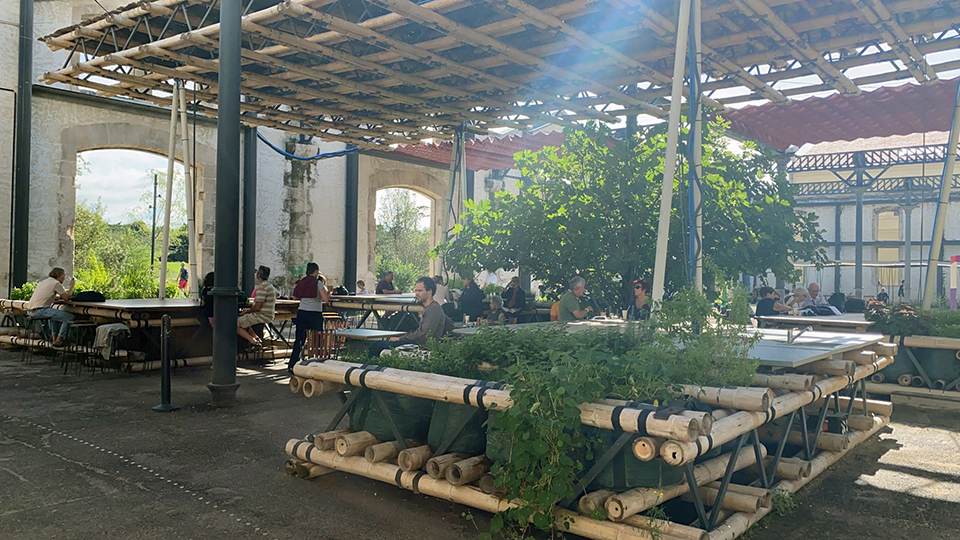
DO WE DREAM UNDER THE SAME SKY
Pavilion, LUMA Arles, France
Photo: Lukas Wegwerth
Edit: September 22, 2021

METAhub
„Mapping Memories – Ver(antw)ortung Börneplatz“
Museums, Education, Theatre Arts – Kultur im digitalen und städtischen Raum, Frankfurt am Main
Kooperationsprojekt des Jüdischen Museums Frankfurt am Main, des Archäologischen Museums Frankfurt am Main
und des Künstlerhauses Mousonturm in Partnerschaft mit dem NODE Verein zur Förderung Digitaler Kultur e.V.
Intervention auf dem Börneplatz
"In ihrer installativen Intervention auf dem Neuen Börneplatz öffnen Prof. Nikolaus Hirsch und Prof. Dr. Michel Müller
den Blick für die historische und soziale Dimension des Platzes. Die Architekten arbeiten dabei mit baulichen Elementen
aus der Logistik: Paletten und Kisten beherbergen Funde aus archäologischen Grabungen am Börneplatz,
oder fungieren als Orte für Gespräche und Austausch. Die Frage, welche und wessen Geschichten dort erzählt werden
und welche Leerstellen bleiben, rückt dabei ebenso in den Fokus wie der Umgang mit architektonischen Zeugnissen der
Börneplatzsynagoge, die bei Bauarbeiten im Jahr 1990 geborgen werden konnten. Im Zentrum der Installation stehen
die originalen Bruchstücke des zerstörten Toraschreins, die vorübergehend an ihren Ursprungsort zurückkehren."
More: METAHUBFRANKFURT
More: FAZ / Frankfurt am Main
Edit: September 13, 2021

STUDIO MC / MAKE HAUSER & WIRTH SOMERSET
Installation view, ‘Antipode’, Make Hauser & Wirth Somerset, 2021
Makers: Akiko Hirai, Studio MC (Jessica Coates and Michel Müller), Adi Toch and Andrea Walsh.
Photo: Dave Watts
More: HAUSER & WIRTH SOMERSET
More: INSTAGRAM / STUDIO MC
Edit: May 18, 2021

DER ARCHITEKT / MITTENDRIN AUSSEN VOR / OBDACHLOSIGKEIT IN DER STADT
Kritischer Raum "Edelstein im Lotus", Andreas Denk
Publication Heft 2/ 2021
More: DER ARCHITEKT
More: EDELSTEIN IM LOTUS
Edit: April 20, 2021
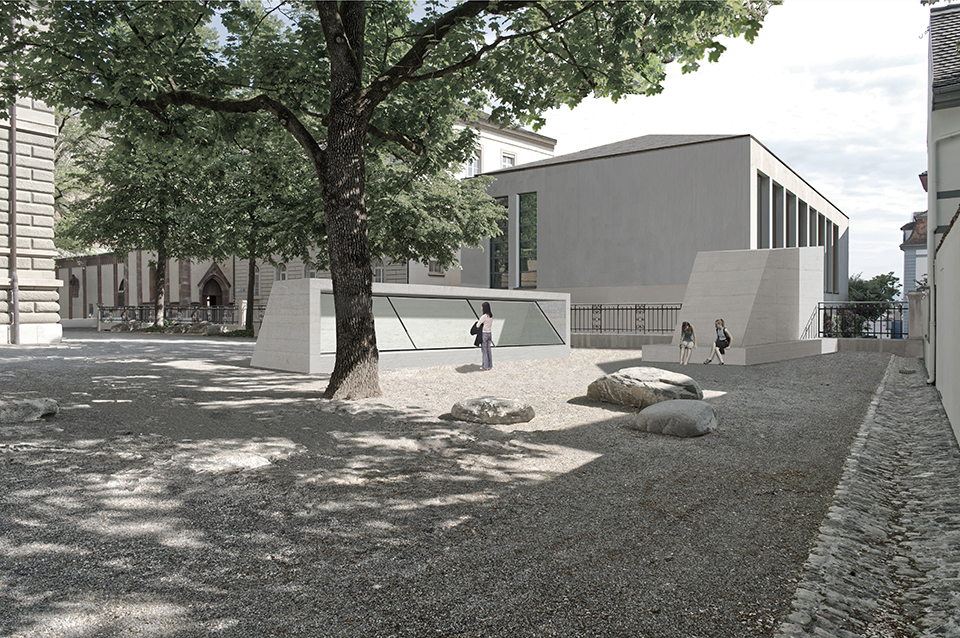
MURUS GALLICUS
"LOST Architekten aus Basel und Studio MC aus Darmstadt gewinnen den Wettbewerb
für die Archäologischen Informationsstelle „Basel, 80 v. Chr. Murus Gallicus – Der Keltenwall“.
Ein unterirdischer Besucherraum und drei Baukörper, die entweder die Höhe oder den Verlauf
der damaligen Verteidigungsmauer aufnehmen, sollen Interessierten die historischen Funde näherbringen.
Die Umgestaltung wird nötig, um die besuchergerechte Vermittlung der Archäologie und die neue Nutzung
des Areals als Pausenplatz der Primarschule Rittergasse vereinen zu können." Architektur Basel
More: ARCHITEKTUR BASEL
Edit: July 15, 2020

NOTUNTERKUNFT IM OSTPARK IN FRANKFURT AM MAIN
Publication in DAB - Deutsches Architektenblatt "Respektvolle Häuser für Wohnungslose: Notunterkünfte und Wohnungen" 04/2020
More: DAB - DEUTSCHES ARCHITEKTENBLATT
Publication in Baunetz "Wissen - Fassade" 02/2020
More: BAUNETZ
Publication in Baumeister "Sozial Bauen" 12/2019
More: BAUMEISTER
Photos © Studio MC
Edit: April 01, 2020
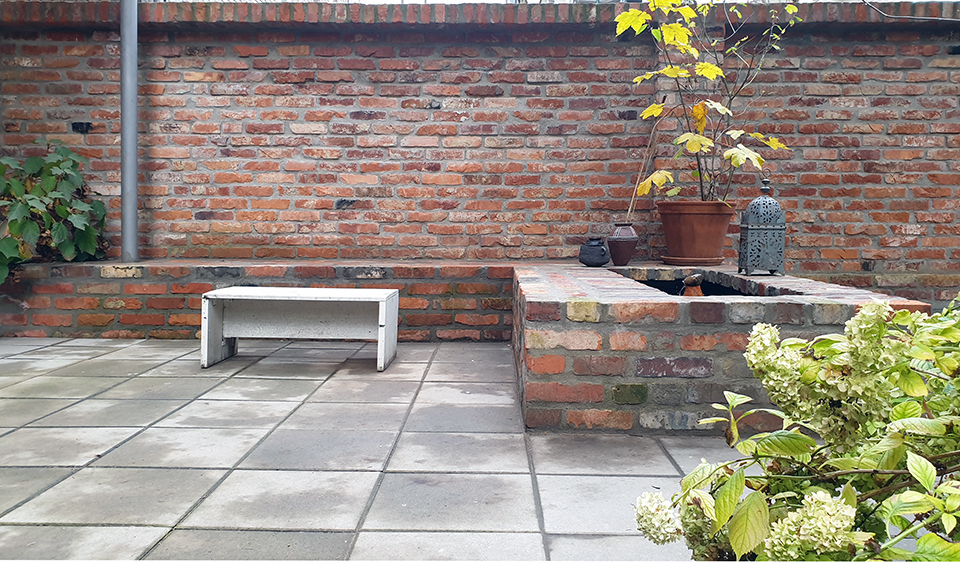
LANDSCAPE GARDENING WITH BRICKWORK
Built with used stones from the 19th century
Jessica Coates / Michel Müller
Edit: November 19, 2019
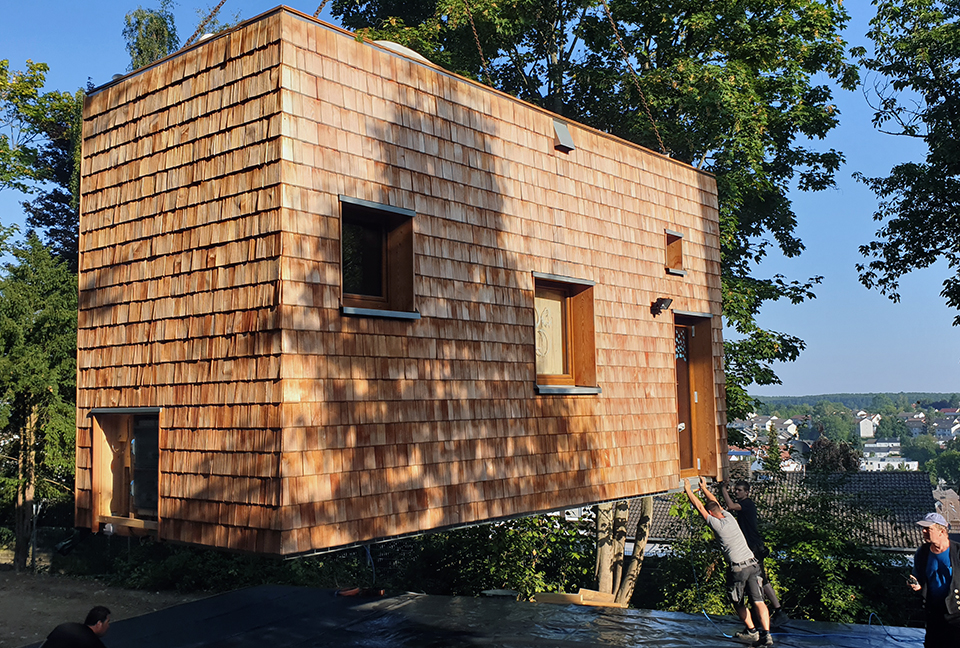
DAS FLIEGENDE KÜNSTLERZIMMER IN OBER-RAMSTADT
Artist in residence: Janina Warnk
More: DAS FLIEGENDE KÜNSTLERZIMMER
More: GEORG-CHRISTOPH-LICHTENBERG-SCHULE
More: CRESPO FOUNDATION
Edit: August 27, 2019

GEMISCHTE TÜTE
Jan Lotter und ein Jahr im „Fliegenden Künstlerzimmer“, Ausgestellt im Kunstverein Wiesbaden
More: Fliegendes Künstlerzimmer
More: KUNSTVEREIN WIESBADEN
Edit: June 21, 2019


DO WE DREAM UNDER THE SAME SKY
Our project „Do We Dream UNDER THE SAME SKY“ is included in the book „2030 NOW – 17 GOALS, 9 BILLION PEOPLE, 1 FUTURE„
Edited by Stine Trier and Sören Rud, published by LIFE Publishing, 2019
Edit: June 08, 2019

MILK DECORATION
Studio MC Objects is featured in the new special edition on ceramics
in MilK Decoration Magazine.
Edit: May 29, 2019

WEIMAR: VOM WESEN UND WERT DER DEMOKRATIE
Ausstellungsarchitektur, Deutsches Historisches Museum, Berlin, 2019
in Kollaboration mit NODE, Berlin
04.04.2019 – 04.08.2019
Edit: April 11, 2019
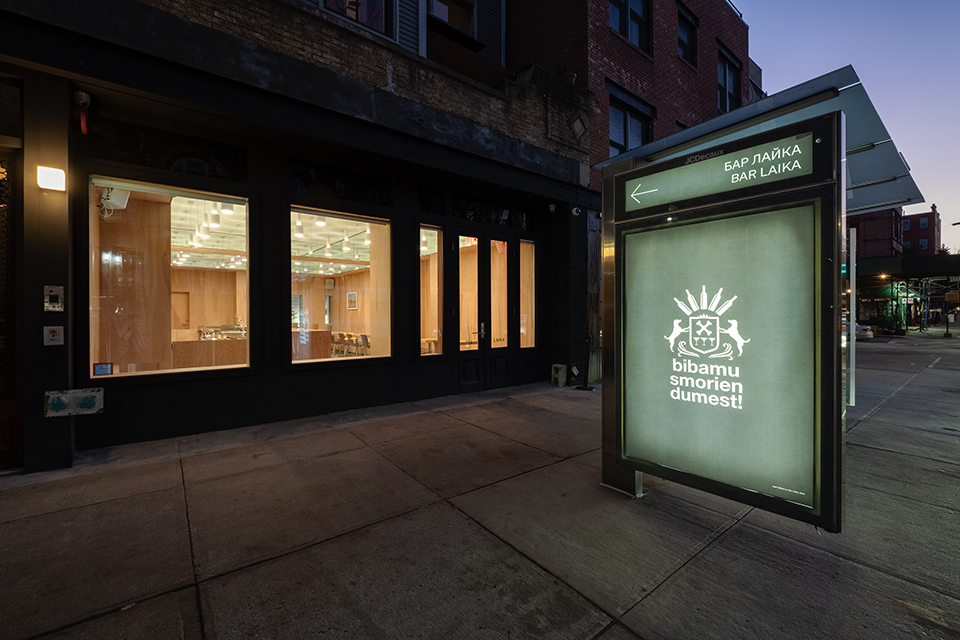
BAR LAIKA
“e-flux is very happy to announce the opening of Bar Laika, our new space in Brooklyn.
Located in Clinton Hill and designed by architects Nikolaus Hirsch and Michel Müller,
Bar Laika was conceived with both our local neighborhood and the extended artistic
community in mind. Our food menu is based on local Atlantic seafood and farm fresh
and foraged vegetables, and is a result of a decade-long collaboration between e-flux
and Hsiao Chen, an artist and chef. The cocktail list is organized by Danna Vajda,
an artist and bartender, and the wines are selected by sommelier Florence Barth.
The music is selected by DJ Sanna Almajedi, and an extensive program of screenings,
talks, and readings is organized by Lily Lewis and Anton Vidokle, with help from
Ingrid Erstad, a curator and chef. Come have a drink with us!“
Foto: Sebastian Bach
More: BAR LAIKA
Found: www.e-flux.com/program/opening-of-bar-laika
More: www.laika.bar
More: www.instagram.com/efluxbarlaika
More: www.artnews.com
Location: Bar Laika by e-flux, 224 Greene Avenue, Brooklyn, NY 11238, USA
Edit: November 01, 2018

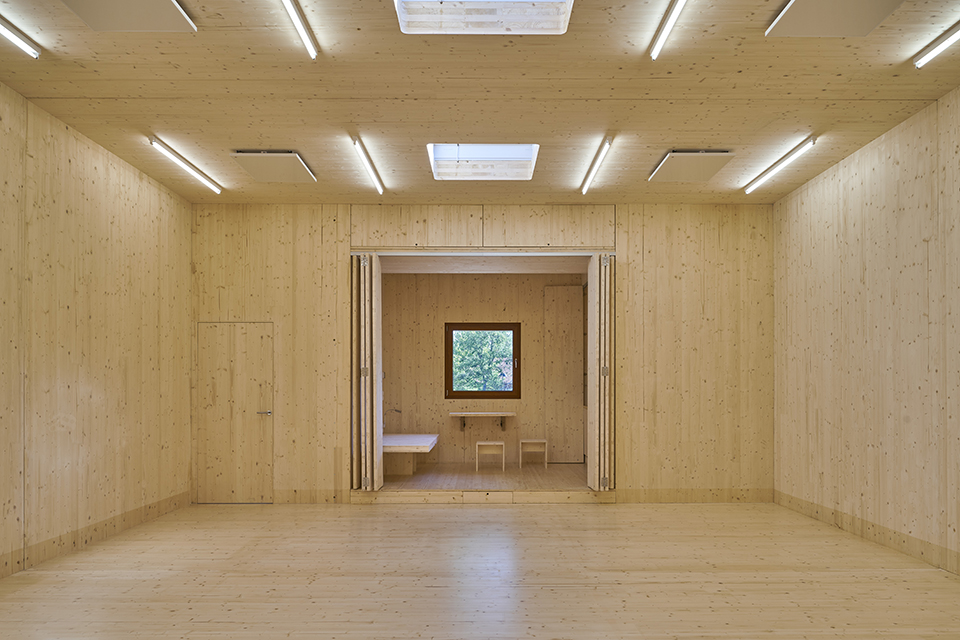
FLIEGENDES KÜNSTLERZIMMER
"Mit „Das fliegende Künstlerzimmer“ startet die Crespo Foundation in Kooperation mit dem Hessischen Kultusministerium (HKM),
dem Hessischen Ministerium für Wissenschaft und Kunst (HMWK), dem Landkreis Marburg-Biedenkopf und der IGS Wollenbergschule
Wetter im Schuljahr 2018/2019 ein bislang einmaliges Format der Kulturellen Bildung:
Ein eigens dafür entworfenes mobiles Künstleratelier „fliegt“ auf den Schulhof der IGS Wollenbergschule im mittelhessischen
Ort Wetter, wo es für ein gesamtes Jahr als „Das fliegende Künstlerzimmer“ gastiert. Darin wohnt und arbeitet der
Künstlerstipendiat Jan Lotter als Artist-in-Residence und öffnet an drei Tagen in der Woche sein „Haus“ für die SchülerInnen
der IGS Wollenbergschule.
In enger klassen- und fächerübergreifender Zusammenarbeit mit den LehrerInnen der Schule entwickelt Lotter künstlerische Ansätze,
um den Kindern und Jugendlichen neue ästhetische Perspektiven auf die Lehrinhalte zu eröffnen. Gleichzeitig möchte der Künstler
die regionale Kulturlandschaft zum lebendigen Austausch in „Das fliegende Künstlerzimmer“ einladen und damit die Schule
kommunal und kulturell vernetzen.
Von den Architekten Prof. Nikolaus Hirsch und Prof. Dr. Michel Müller als ästhetisch und funktional attraktive Modul-Architektur
in Holzbauweise entworfen, wird „Das fliegende Künstlerzimmer“ so zu einem einladenden und inspirierenden außerschulischen Ort
mitten auf dem Schulhof.
Ganz im Sinne ihres Mottos „Menschen stark machen“ möchte die Crespo Foundation mit „Das fliegende Künstlerzimmer“ gemeinsam
mit ihren Kooperationspartnern ein Programm der Kulturellen Bildung begründen, das die kulturelle Schulentwicklung hessenweit
langfristig vorantreibt und das insbesondere auch im ländlichen Raum realisiert werden kann. Gleichzeitig fördert
„Das fliegende Künstlerzimmer“ KünstlerInnen dabei, während ihrer Zeit als Artist-in-Residence eigene künstlerische Projekte
zu realisieren und parallel dazu ihre Kompetenzen in der Arbeit mit Kindern und Jugendlichen im Kontext Schule weiterzuentwickeln.
Das HKM unterstützt das Projekt durch besondere Fortbildungsformate sowie eine Prozessbegleitung. So wird die Schule etwa ins
Netzwerk der kulturell aktiven Schulen aufgenommen und erhält dadurch die Möglichkeit, an besonderen Angeboten teilzunehmen oder
pädagogische Tage durchzuführen. Mit dem Ziel, mehr jungen Menschen die Teilhabe am kulturellen Leben zu ermöglichen,
fördert das HMWK den/die KünstlerIn über ein Arbeitsstipendium in Höhe von monatlich 2.000 Euro sowie einen Material- und
Aufwendungszuschuss von jährlich 6.000 Euro.Die Crespo Foundation hat unter Federführung der Architekten Prof. Nikolaus Hirsch
und Prof. Dr. Michel Müller die Entwicklung und Realisierung der mobilen Architektur beauftragt, während der Landkreis
Marburg-Biedenkopf für die Organisation vor Ort sowie die Übernahme der technischen Kosten verantwortlich ist."
Text: Crespo Foundation, Frankfurt am Main
Fotos: Norbert Miguletz
More: Fliegendes Künstlerzimmer
More: Blog_Crespo Foundation
More: www.faz.net
More: www.journal-frankfurt.de
More: www.igswollenbergschule.de
More: www.hfg-offenbach.de
Edit: September 11, 2018
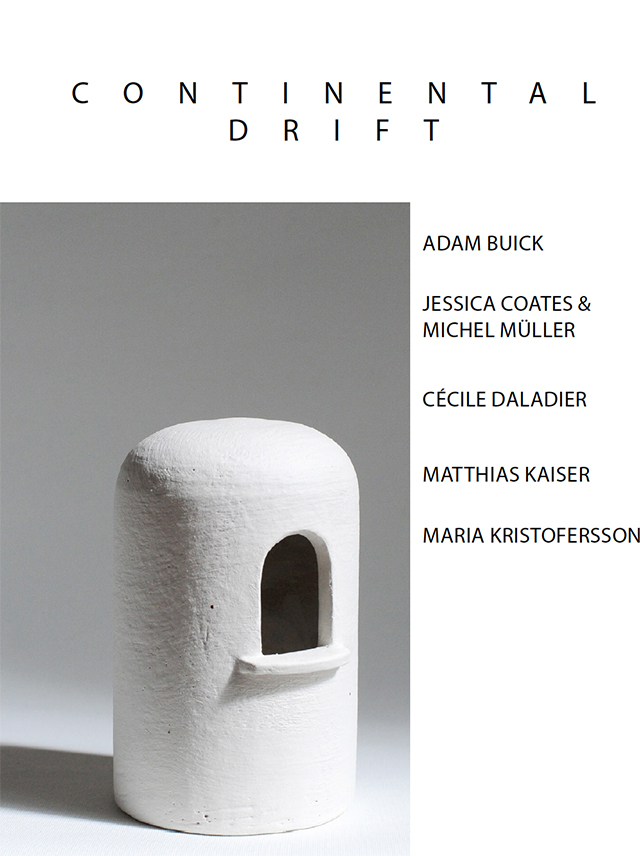
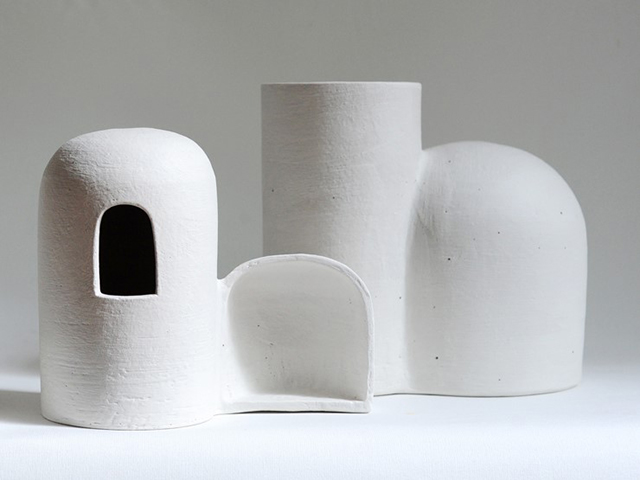
CONTINENTAL DRIFT
Opening night Friday 10th August 6pm-8pm
Exhibition 11th Aug - 2nd Sept 2018
Mr Kitly gallery
381 Sydney Road
Brunswick
Curated by Kirsten Perry
Artists:
Adam Buick (United Kingdom)
Jessica Coates and Michel Müller (Germany)
Cécile Daladier (France)
Matthias Kaiser (Austria)
Maria Kristofersson (Sweden)
More: Continental Drift
With their ceramic objects Studio MC (Jessica and Michel) operate small scale work that allows for play and experimentation.
Referencing primary shapes and architectural forms Studio MC aims to make the viewer question his expectations of an object.
Although it is often stressed that ceramics need to be touched, a matter of particular interest consists of how a viewer
translates shape and silhouette of an object into something tangible and describable. A sort of inquiry takes place concerning
the human need to categorize objects. When is a shape easily recognized and part of the collective form vocabulary and when
does it speak to the individual or unconscious?
Studio MC’s objects make use of various techniques. Some pieces are coil built step by step and developed during making,
resulting in organic shapes with an irregular silhouette. Others are rather linear sculptures, planned in advance and carefully
assembled from slabs and wheel thrown parts. This oscillation between the two different techniques helps to maintain a state
of exploration and highlights different aspects of the universal quality of a vessel. It promotes a deep interest and understanding
of shape and formal vocabulary. For Studio MC ultimately all work may be traced back to the vessel and it’s various traditions.
Be it in the classical sense of something that can hold food, liquid, flowers etc., or the more architectural shapes, where the
function of a vessel is comparable to an enclosure that houses more intellectual or spiritual matters. With the concept of the
intact vessel there is automatically a link to the broken and shattered. Ceramics are thought of as fragile and simultaneously
they can last for ages. When a vessel or sculpture is fragmented, the wholeness of the vessel has dissolved in pieces leaving
behind something similar to a ruin. A symbol of the bygone, derelict and failed. Although offering its own aesthetic it is the
antipode of the safeness and comfort provided by a vessel.
What local landscape to you see daily or regularly?
We are very lucky to have many beautiful historic parks with very old trees near us and the Odenwald, a low mountain range
with woods and beautiful sights to visit. Visiting the hinterland of Darmstadt is part of our routine and allows us to take a break
and put things into perspective. We consider it an important part of our work/life. We‘ve had the typical discussions about the
pro‘s and con‘s of big city life versus small green city, and the usual fear of missing out but are now content with having
chosen the latter. While living in big cities like Berlin we always missed the quick access to nature and the much calmer life
of a small town.
What part of your country’s landscape inspires you?
In our surrounding countryside we have lots of castles and vista points to survey the region. In
summer, to get there you pass through a lot of cool shadowy valleys, sunlit fields and hilltops. So it‘s the quick change of
light and temperature and the soft modulation of the landscape that‘s inspiring. The passing of time feels kind of different.
We have a few go to places that seem to charge you with a special energy. Also living with kids and observing their dealing
with nature and play is great inspiration.
What comes to mind when you think of the Australian landscape?
We mainly imagine the Australian landscape the way it is usually portayed in the media: vast, wild and arid with threatening
sun and heat, where you better not get lost in the desert like interior.
Edit: August 11, 2018
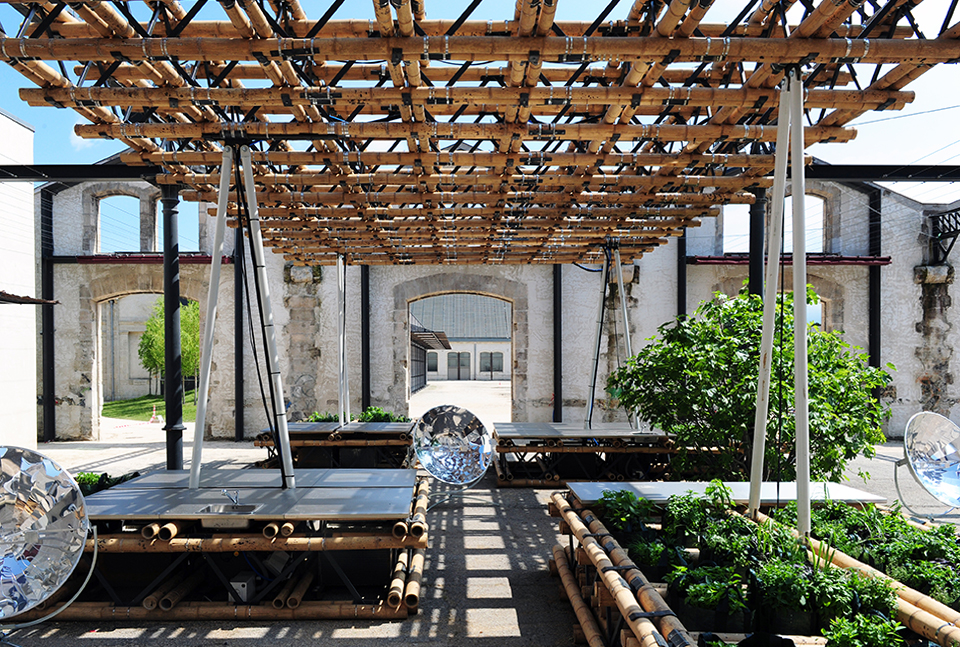
DO WE DREAM UNDER THE SAME SKY
Rirkrit Tiravanija, Nikolaus Hirsch, Michel Müller
May 14–September 23, 2018
Luma Foundation
45 chemin des Minimes
LUMA Arles, Parc des Ateliers
13200 Arles
France
More: www.luma-arles.org
More: www.e-flux.com
More: www.moussemagazine.it
For Luma Days, “Hospitality: Searching for common ground," artist Rirkrit Tiravanija, and architects Nikolaus Hirsch and Michel Müller have developed a new version of their ongoing project DO WE DREAM UNDER THE SAME SKY. In the logic of an exquisite corpse the pavilion can be seen as a disembodied part of the future artist residency and workshop at The Land, a self-sustaining artistic community initiated by Rirkrit Tiravanija and Kamin Lertchaiprasert near Chiang Mai in Thailand that engages with the idea of an artistic utopia, presenting an ecological and sustainable model for future artistic practice. Reminiscent of a Surrealist "exquisite corpse"—beginning with a single contribution that continues to grow piecemeal—various architects, engineers, and artists will contribute different building components (such as structure, façade etc) to this unusual architectural assemblage as a collective work.
After its first manifestation at Art Basel in 2015 and at the Garden Triennale in Aarhus in 2017 the new version of the building in Arles will be comprised of an open-air kitchen, a herbal garden and a communal dining area where visitors can eat, drink and relax in a convivial atmosphere, while engaging in discussions and investigations about practices of sustainability, the geopolitics of food, and building technologies in the era of the Anthropocene.
The project stands on the continuation of numerous conversations among artists on the topics of urbanization in a post-rural condition, the act of building as a collaborative process, and land as a concept that can exist outside of ownership. Through DO WE DREAM UNDER THE SAME SKY, Tiravanija, Hirsch and Müller speak to The Land’s objectives relating to improvisation, collaboration, and the questioning of institutional structures.
Luma Days is a yearly forum of art and ideas. It kicks off Luma’s summer program in May with a week filled with public events, conferences, workshops, displays and installations. This year, the central theme is Hospitality: Searching for Common Ground and involves Kader Attia, Daniel Birnbaum, Jan Boelen, Benjamin Boudou, Maryse Condé, Manthia Diawara, Elsa Dorlin, Liam Gillick, Dominique Gonzalez- Foerster, Maja Hoffmann, Arthur Jafa, Sandi Hilal, Léonora Miano, Hans Ulrich Obrist, Paul B. Preciado, Anjalika Sagar and many others.
Edit: May 16, 2018
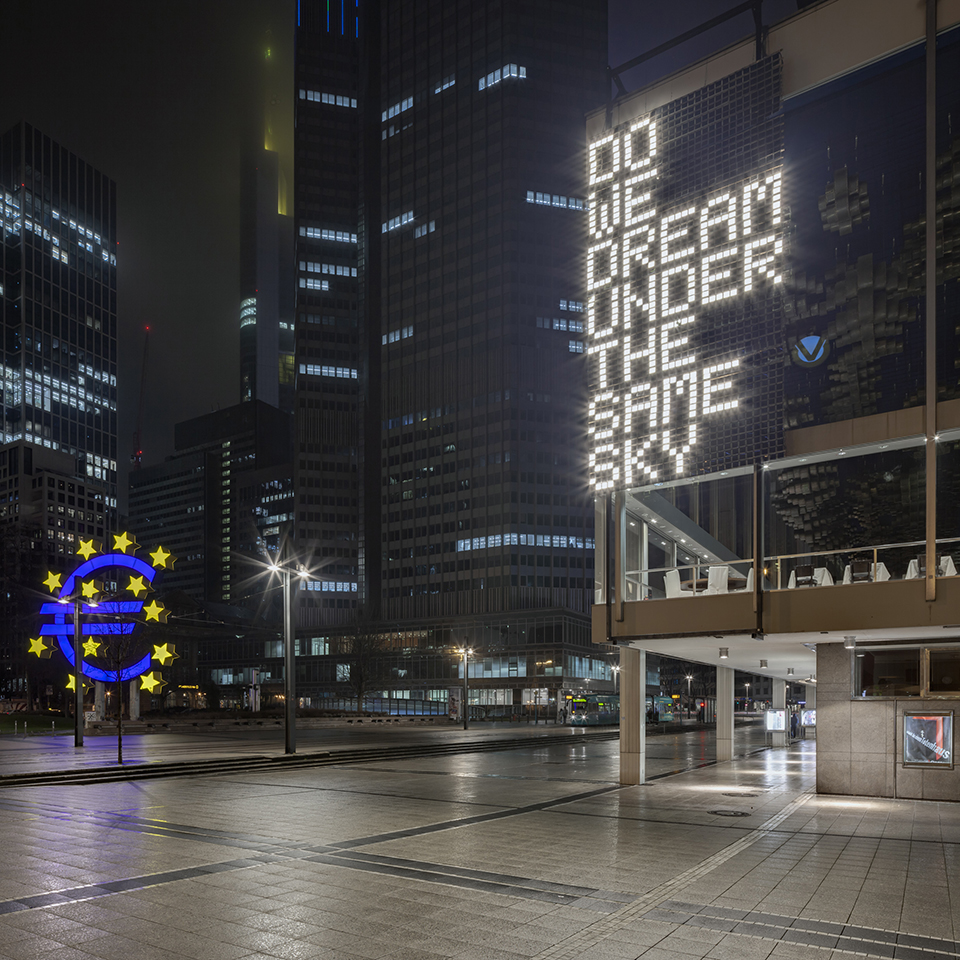
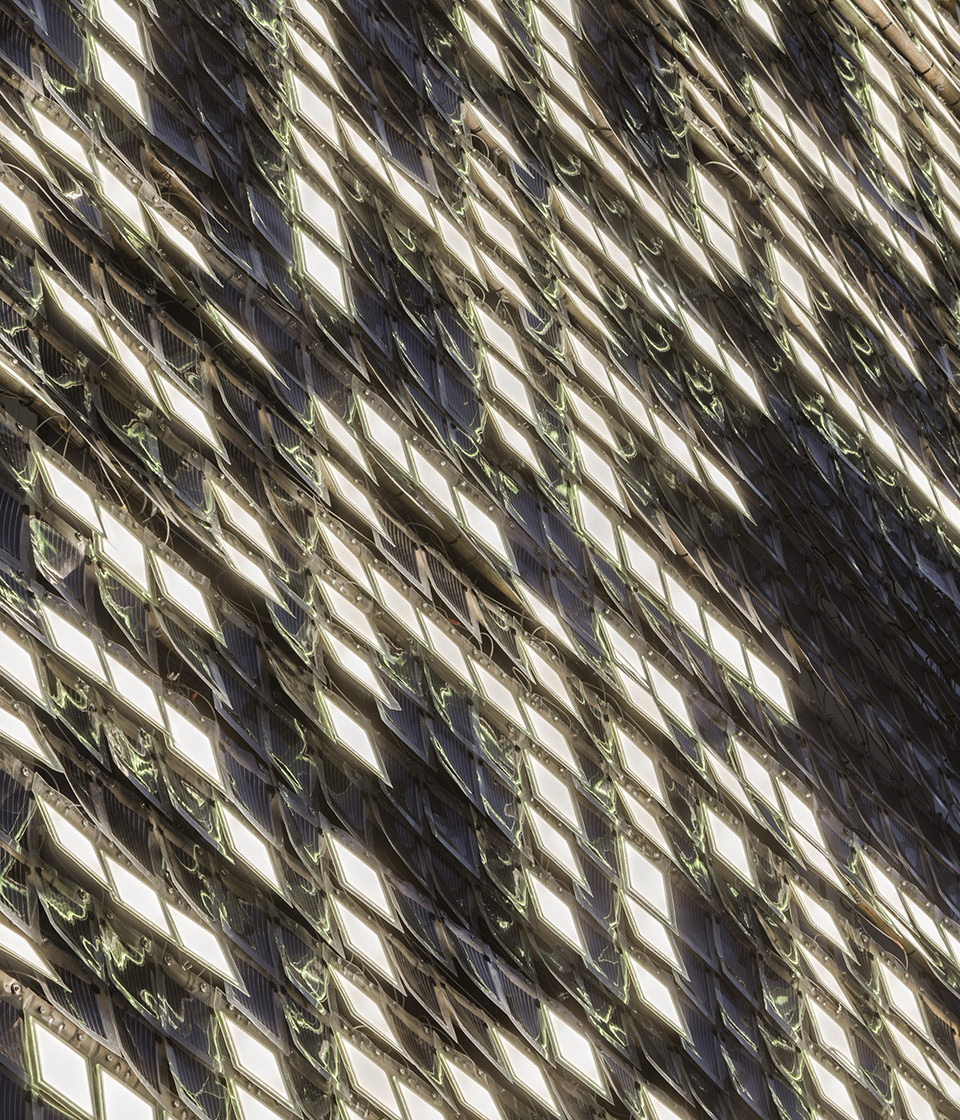
DO WE DREAM UNDER THE SAME SKY
The project developed by the architects Nikolaus Hirsch / Michel Müller and artist Rirkrit Tiravanija. This work can be seen as a disembodied extension of the upcoming artist residency at The Land, a self-sustaining artistic community initiated by Rirkrit Tiravanija and Kamin Lertchaiprasert near Chiang Mai in Thailand that proposes an artistic utopia, presenting an ecological and sustainable model for future practice.
The first component of this sequential building process, a structural system consisting of a bamboo-steel roof and flexible columns, was realized on the occasion of Art Basel in 2015, the second element, a hanging façade structure was constructed for the Garden Triennale in Aarhus (Denmark, 2017).
The third building component, integrating at once both a protective façade material and an energy producing device, was developed for the Biennale in Seoul and will now be shown for the first time in Europe (Luminale / Oper, Frankfurt am Main): a textile façade that produces electricity and emits light, using advanced organic photovoltaics (OPV) and organic light emitting diode (OLED) technology. The shingle-like system includes 1250 OPV and 403 OLED modules (each 155 x 175 mm), suspended from a grid of bamboo tubes. The energy is produced during the day and emitted during night, highlighting the sentence “Do We Dream Under The Same Sky”. The title refers not only to the commons of energy but also to the possibility of a universal discourse in the context of rising national, social, religious and economic particularisms around the globe.
Architects: Nikolaus Hirsch / Michel Müller (Frankfurt am Main)
Artist: Rirkrit Tiravanija (Chiangmai, New York, Berlin)
In collaboration with Hannah Bürckstümmer, Michael Grund, Richard Harding, Martina Hüber, Hermann Issa, David Müller, Guido Olbertz, Ralph Paetzold, Pavel Schilinsky.
The project has been made possible through the generous support by Merck, Kolon, OLEDWORKS and OPVIUS.
Pictures: © Oliver Blum
More: https://luminale-frankfurt.de/en/projects/do-we-dream-under-the-same-sky/
Edit: March 21, 2018

STUDIO MC OBJECTS
Jessica Coates / Michel Müller
More: www.objects.studio-mc.de
Photo © StudioMC
Edit: October 25, 2017

ART WITHOUT DEATH: RUSSIAN COSMISM
HKW / Haus der Kulturen der Welt, Berlin
Exhibition design: Nikolaus Hirsch / Michel Müller in collaboration with Kerstin Meyer-Ebrecht
The exhibition delves into Russian Cosmism—its philosophical, scientific, artistic concepts and ideas—by intertwining historical material and contemporary contributions.
In his three-part film project Immortality for All!, artist Anton Vidokle probes Cosmism’s influence on the twentieth century and suggests its relevance to the present day. In Part One he returns to the foundations of Cosmist thought (This Is Cosmos, 2014). Part Two explores the links between cosmology and politics (The Communist Revolution Was Caused By The Sun, 2015) and Part Three restages the museum as a site of resurrection, a central Cosmist idea (Immortality and Resurrection for All!, 2017). Combining essay, documentary, and performance, Vidokle quotes from the writings of Cosmism’s founder Nikolai Fedorov and other philosophers and poets. His wandering camera searches for traces of Cosmist influence in the remains of Soviet-era art, architecture and engineering, moving from the steppes of Kazakhstan to the museums of Moscow. Music by John Cale and Éliane Radigue accompanies these haunting images, conjuring up the yearning for connectedness, social equality, material transformation and immortality at the heart of Cosmist thought.
Cosmic Imagination: Artists of the Russian Avant-Garde, curated by Boris Groys, presents a selection from the George Costakis Collection (Greek State Museum of Contemporary Art – Costakis Collection, Thessaloniki), the largest collection of the Russian avant-garde outside Russia. The works by Vassily Chekrygin, Ksenia Ender, Maria Ender, Ivan Kliun, Gustav Klutsis, Ivan Kudriashev, Solomon Nikritin, Kliment Redko, Aleksandr Rodchenko, Olga Rozanova & Aleksei Kruchenykh were inspired by the biopolitics of immortality and life in the cosmos, which has often been overlooked by the canon of art history.
Arseny Zhilyaev’s large-scale star-shaped artwork—a functional library as well as a futuristic installation—compiles a wide range of key works on Russian Cosmist thought, science, poetry, and fiction under the light of blood-circulation-improving ionization lamps based on a technology by Soviet biophysicist Aleksandr Chizhevsky.
1 Sep – 3 Oct 2017
Edit: September 21, 2017
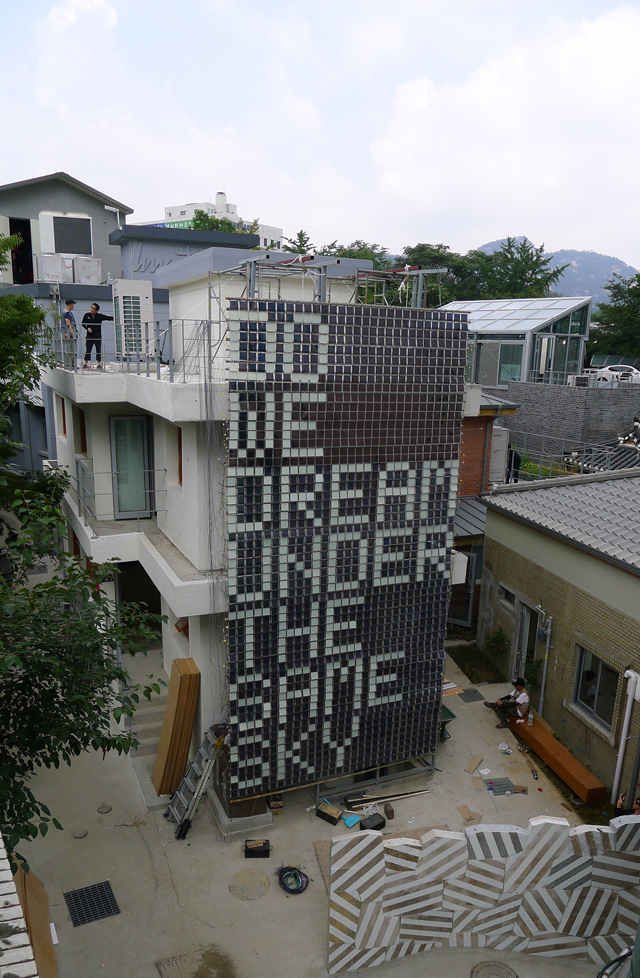
DO WE DREAM UNDER THE SAME SKY / SEOUL BIENNALE OF ARCHITECTURE AND URBANISM
2017.9.2.—11.5.
Nikolaus Hirsch / Michel Müller with Rirkrit Tiravanija
Nikolaus Hirsch / Michel Müller and artist Rirkrit Tiravanija develop a new building component for their residency building at The Land (Chiangmai, Thailand). The first component of the building, a structural system consisting of a bamboo-steel roof and flexible columns, was realized on the occasion of Art Basel in 2015, the second element, a hanging façade structure was constructed for the Garden Triennale in Aarhus (Denmark, 2017).
The third building component, integrating at once both a protective façade material and an energy producing device, was developed for the Biennale in Seoul: a textile façade that produces electricity and emits light, using advanced organic photovoltaics (OPV) and organic light emitting diode (OLED) technology. The shingle-like system includes 1250 OPV and 403 OLED modules (each 155 x 175 mm), suspended from a grid of bamboo tubes. The energy is produced during the day and emitted during night, highlighting the sentence “Do We Dream Under The Same Sky”. The title refers not only to the commons of energy but also to the question of a universal culture in the context of rising national, ethic, and religious particularisms around the globe.
Architects: Nikolaus Hirsch / Michel Müller (Frankfurt am Main)
Artist: Rirkrit Tiravanija (Chiangmai, New York, Berlin)
In collaboration with Hannah Bürckstümmer, Michael Grund, Richard Harding, Martina Hüber, Hermann Issa, David Müller, Guido Olbertz, Ralph Paetzold, Pavel Schilinsky.
The project has been made possible through the generous support by Merck, Kolon, OLEDWORKS and OPVIUS.
Photo © Michel Müller
Edit: September 04, 2017

O16 NEU
Übernachtungsstätte für Obdachlose im Ostpark, Frankfurt am Main / Accommodation for the homeless in the Ostpark, Frankfurt am Main, Germany
Michel Müller in collaboration with Heiner Blum and Jan Lotter
Team:
Entwurf (Concept and Design): Prof. Dr. Michel Müller Architekt, Darmstadt in Zusammenarbeit mit Prof. Heiner Blum und Jan Lotter, Offenbach am Main
Ausführungsplanung / Construction planning: HKS Architekten, Erfurt
Landschaftsplanung / Landscape planning: Andreas Lindner, Neu Isenburg / Zeppelinheim
Tragwerksplanung / Planning of structural framework: Wagner Zeitter Bauingenieure, Wiesbaden
Bauherr / Employer: Frankfurter Verein für soziale Heimstätten, Frankfurt am Main
Photo © Studio MC
:: More ::
Edit: August 16, 2017

DO WE DREAM UNDER THE SAME SKY
Rirkrit Tiravanija, Nikolaus Hirsch, Michel Müller??
June 3–July 30, 2017 ??ARoS Triennial ?Various locations?, Aarhus?Denmark
www.arostriennial.dk
?DO WE DREAM UNDER THE SAME SKY is located at the beach near Mindepark, Aarhus
For The Garden, the first ARoS Triennial in Aarhus, artist Rirkrit Tiravanija
and architects Nikolaus Hirsch and Michel Müller have developed a new version
of their ongoing project DO WE DREAM UNDER THE SAME SKY comprised of a pavilion
and a dense program of films, talks and cooking.
In the logic of an exquisite corpse, the pavilion can be seen as a disembodied
part of the future artist residency and workshop at The Land, a self-sustaining
artistic community initiated by Rirkrit Tiravanija and Kamin Lertchaiprasert
near Chiang Mai in Thailand that engages with the idea of an artistic utopia
and presents both an ecological and sustainable model for future artistic practice.
Reminiscent of a Surrealist “exquisite corpse”—beginning with a single contribution
that continues to grow piecemeal—various architects, engineers, and artists will
contribute different building components (such as structure, façade, etc.) to this
unusual architectural assemblage as a collective work.
After its first manifestation at Art Basel in 2015, the pavilion in Aarhus presents
the first version of the building in its future dimensions of 22x22 meters.
The structure houses several kitchen and garden elements within which the various
themes of the project will be played out. Investigating models and practices of
sustainability, the geopolitics of food, and building technologies in the era of the
anthropocene, Tiravanija, Hirsch and Müller have put together a public program that
runs daily from June 3 to July 30.
Talks?
The installation will function as a platform and conceptual extension to “the land”
in the form of a series of talks with Doug Aitken, Marie Nipper & Erlend Høyersten,
Lars Brøndum, Rasmus Ejrnæs, Thomas Laursen, Bo Lidegaard, Jacob Lillemose,
Anders Lenager, Hans Joakim Offenberg, Kim Qvist, Jesper Theilgaard, Anette Vansø,
Signe Wenneberg, Simon Starling, and Superflex.
Cooking?
The cooking sessions use local, organic ingredients. New dishes will be hybridized
and altered by Rirkrit Tiravanija, Jan Pfeifer, Niels Birk, and Bjørn Madsen.
Slide Show?
Rachel Sussmann, The oldest living things in the world slide show, 2017 (daily from 10am–10pm)
Film Series (curated by Rirkrit Tiravanija, Nikolaus Hirsch)?
Doug Aitken, Altered Earth,2012?
Doug Aitken, Migration, 2009?
Matthew Barney, De Lama Lamina, 2004?
Fischli / Weiss, The Right Way, 1982-83?
Peter Greenaway, The Draughtsman's Contract, 1982?
Tim Grabham, Jasper Sharp, The Creeping Garden, 2014?
Keiichi Hara, Sarusuberi: Miss Hokusai, 2015?
Derek Jarman, The Garden, 1990?
Zuleika Kingdon, Foreground/Background: A Day in Janet Boulton’s Garden?
Howard Sooley, Derek Jarman’s Prospect Cottage, 2014?
Philippe Parreno, The Boy from Mars, 2003?
Rirkrit Tiravanija, Lung Neaw visits his neighbours, 2011?
Yang Fudong, Seven Intellectuals in Bamboo Forest, Part I, 2003?
Tuan Andrew Nguyen & SUPERFLEX, Kwassa Kwassa, 2015
?Adrián Villar Rojas, El momento más hermoso de la guerra (The most beautiful moment of war), 2017?
Apichatpong Weerasethakul, Blissfully Yours, 2002
For detailed film program, click here
Edit: June 06, 2017

DER TRAUM VOM EWIGEN LEBEN / A MUSEUM OF IMMORTALITY
Publication in Detail
Read more: www.detail.de
More about :: a museum of immortality ::
Edit: December 10, 2016

A HOUSE FOR ARGUMENTS AND STORIES
Nikolaus Hirsch / Michel Müller at The 11th Shanghai Biennale, “Why Not Ask Again? Arguments, Counter-arguments and Stories,” will be on view at Power Station of Art, Shanghai, November 11, 2016–March 12, 2017.
More: www.shanghaibiennale.org / www.news.artnet.com / www.e-flux.com
Team: Nikolaus Hirsch, Michel Müller, Patrick dos Santos Domingos
Edit: November 12, 2016

A MUSEUM OF IMMORTALITY
Design Week Mexico, Museo Tamayo, Mexico City
“We are thrilled to show a prototype for the Museum of Immortality in Mexico City. Its deep fascination with death cults makes Mexico a very special context for such a speculative project, Based on theories of cosmism and resurrection by philosopher Boris Groys and artist Anton Vidokle, we try to speculate on the limits of what we call design and the material world. We ask: Can we design after-life? Can—as the context of the Museo Tamayo suggests—humans be preserved like museum artifacts?”
Nikolaus Hirsch / Michel Müller
Team: Nikolaus Hirsch, Michel Müller, Patrick dos Santos Domingos
:: Read more ::
Publications: www.designboom.com / www.archpaper.com / www.reforma.com / www.dezeen.com / www.wallpaper.com / www.google.com/maps / www.aasarchitecture.com
Edit: October 09, 2016

A HOUSE FOR ARGUMENTS AND STORIES
Nikolaus Hirsch / Michel Müller at The 11th Shanghai Biennale, “Why Not Ask Again? Arguments, Counter-arguments and Stories,” will be on view at Power Station of Art, Shanghai, November 11, 2016–March 12, 2017.
The artist list: Agan Harahap, Aki Sasamoto, Anawana Haloba, Ayesha Jatoi, Ayodamola Tanimowo Okunseinde & Salome Asega, Azadeh Akhlaghi, Bahar Behbahani, Bianca Baldi, Cell Art Group, Chen Zhe, Christian Bumbarra Thompson, Christine Sun Kim, Desire Machine Collective, Etel Adnan, Fabrice Monteiro, Farzana Ahmed Urmi, Forensic Oceanography, Gagandeep Singh, Georges Adéagbo, Graham Harwood/YoHa, Ha Bik Chuen, Hao Jingban, Heidi Voet, Hu Xiangqian, István Zsíros, Jagdeep Raina, Jefferson Pinder, John Gerrard, Karl Max, Kendell Geers, Khaled Barakeh, LantianXie, Lee Mingwei, Lena Zubtsova, Liao Fei, CANTONBON, Lin Ke, Phuong Linh Nguyen, Lisa Tan, Liu Wei, Liu Yujia, Lu Pingyuan, Ma Haijiao, Mao Chenyu, Marina Androsovich, Matts Leiderstam, Moinak Biswas, Müge Yilmaz, Nabuqi, Navjot Altaf, Nicholas Wells, Nikolaus Hirsch / Michel Müller, Olivier de Sagazan, Olu Oguibe, Patty Chang, Peter Piller, Rabin Mondal, Radical Space, Rafiqul Shuvo, Rheim Alkadhi, Robin Meier, Ross Manning, Sammy Baloji, Sener Özmen, Simone Fattal, Sofya Staune, Sohrab Hura, Sun Yuan & Peng Yu, SUPERFLEX, Surabhi Sharma & Tejaswini Niranjana, Susanne Kriemann, Takashi Arai, Tao Hui, Taus Makhacheva, Theo Eshetu, Tomás Saraceno, Verina Gfader, Vinu V.V., Vishal K. Dar, Wang Gongxin, Wang Haichuan, Yang Zhenzhong, Yazan Khalili, Yin Yi, Yu Ji, Zheng Bo, Zheng Chongbin, Zhou Zixi
More: www.shanghaibiennale.org / www.news.artnet.com / www.e-flux.com
Edit: September 15, 2016

THE GARDEN
A pavilion for the ARoS GardenTriennale, Aarhus 2017, Denmark
In collaboration with Rirkrit Tiravanija
More: www.aarhus2017.dk
Edit: August 26, 2016
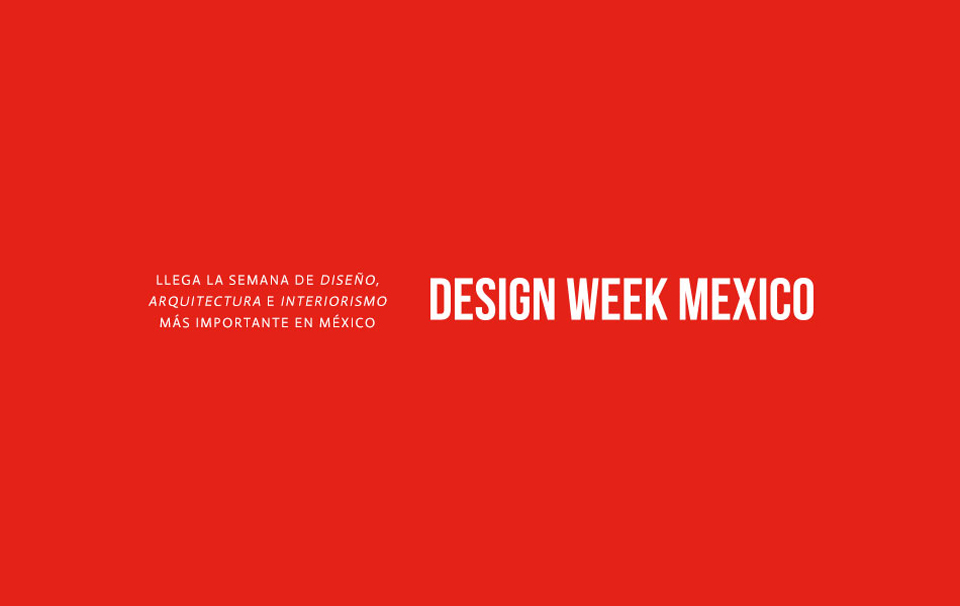
DESIGN WEEK MEXICO
A pavilion for the Museo Tamayo
Mexico City from 5-9 October 2016
More: www.designweekmexico.com / www.museotamayo.org
Edit: August 25, 2016
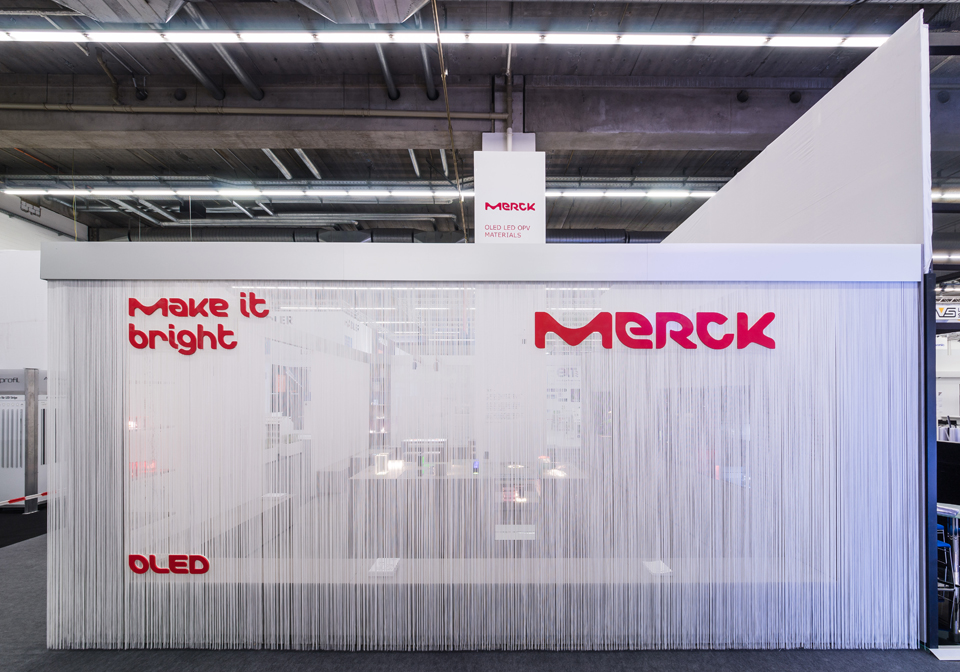
OLED + Installation
Light and Building, Merck, Frankfurt am Main, 2016
In collaboration with Siegrun Appelt
Photo © Kristof Lemp
Edit: June 01, 2016
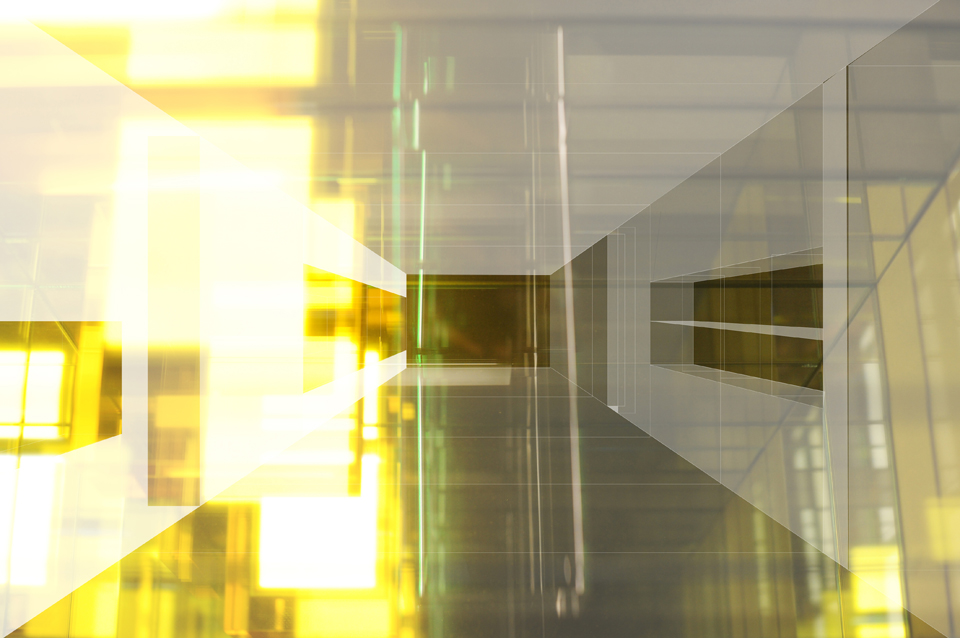
OLED LIGHT TUBE
Innovation Center, Merck, Darmstadt
In collaboration with Siegrun Appelt
Photo © Studio MC
Edit: May 21, 2016

CONSTRUCTION OF THE STUDIO RESIDENCY AT THE LAND
In collaboration with Rirkrit Tiravanija
Photo © David Scharlach
Edit: May 16, 2016
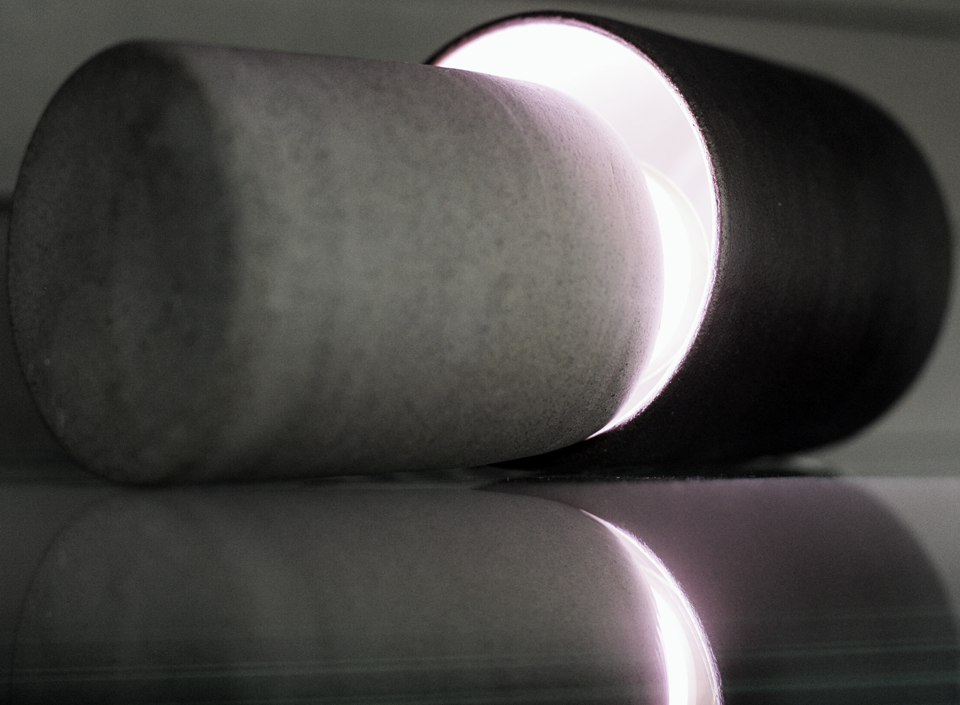
MC CERAMIC
Photo © StudioMC
More: www.objects.studio-mc.de
Edit: April 01, 2016
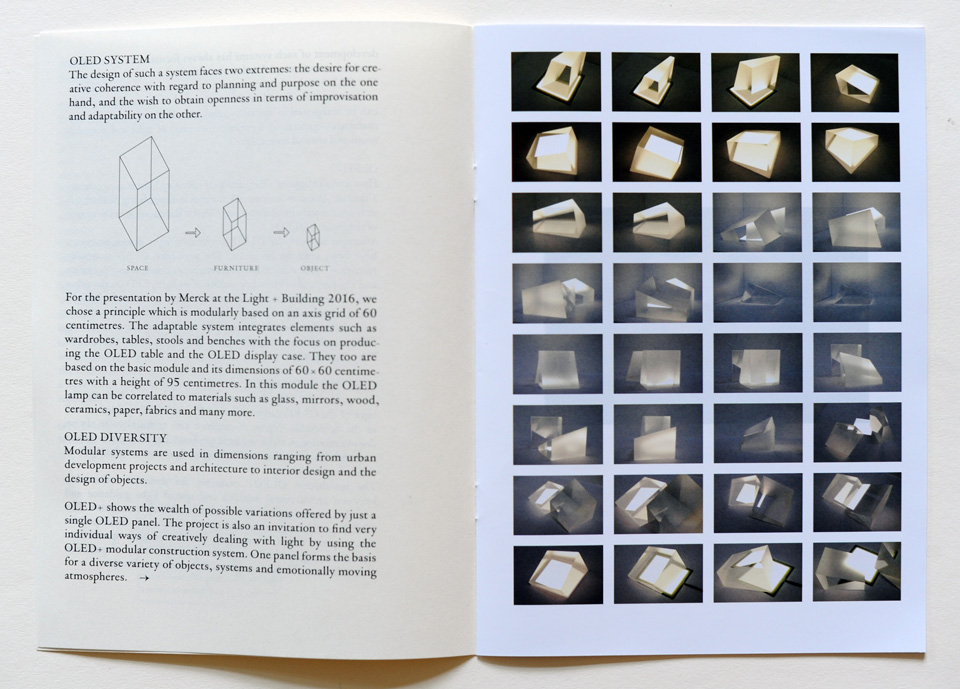
OLED +
Installation at the "Light and Building" by MERCK, Frankfurt am Main, 2016
In collaboration with Siegrun Appelt
Graphic Design: Studio Matthias Göhrlich
Ceramic Objects: Studio MC
Photo © StudioMC
Edit: March 31, 2016

THE BOOK - The New Art Sonje Center in Seoul
:: More ::
Edit: January 30, 2016

TIPI
Conversion of the top floor studio apartment
Team: Jessica Coates, Michel Müller
Edit: January 22, 2016

ART SONJE SPACE PROJECT / ARCHITECTURE AS / AND EXHIBITION, SEOUL
NIKOLAUS HIRSCH / MICHEL MÜLLER
More information: ART SONJE SPACE PROJECT
Edit: December 17, 2015

DISPLAY ARCHITECTURE FOR CORRUPTION: EVERYBODY KNOWS...
November 11–December 19, 2015
Opening: Tuesday, November 10, 6–9pm with a reading of the screenplay Act I, Swearing-in Whispers by CAMP
Artist talks and discussions: Wednesday, November 11, 7:30pm
with Pio Abad, Peggy Ahwesh, Julieta Aranda, Elizabeth A. Povinelli, and Natasha Ginwala
e-flux
311 East Broadway
New York, NY 10002
Hours: Tuesday–Saturday noon–6pm
http://www.e-flux.com/program/corruption-everybody-knows/
Contributors: Pio Abad, Peggy Ahwesh, Julieta Aranda, Sarnath Banerjee, CAMP, Moyra Davey, Lawrence Abu Hamdan, Rana Hamadeh, Francis Newton Souza, Gabriel Acevedo Velarde, Susanne M. Winterling, Franco “Bifo” Berardi, Yin-Ju Chen and James T. Hong, Hu Fang, Hassan Khan, Wietske Maas, Naeem Mohaiemen, Elizabeth A. Povinelli, Aaron Schuster, Denise Ferreira da Silva, Charles Stankievech, Jan Verwoert
Curated by Natasha Ginwala
Corruption accesses the state body as both a natural and mystical corpus, eventually producing a third phantom body—corrosive and self-extending—emitting from an inside as techniques of social performance, bureaucratic desire, and conversion in the very terms of ethical life. A glistening mirror of false potential in a climate of communal ventriloquism. We are strategically held by this spirit without an image, which thrives in parasitic acts of emergence via disappearance.
Its flesh seizes the veins of the post-revolutionary state, pumping, circulating, and blocking in a synchronized manner while unleashing shape-shifting forms as its residue: the “back office” and black market, daytime money laundering and nightly abductions. It is found in the materiality of phone tapping, fake paintings, and defective pixels; dispersed in the creepy smile of a business magnate, snoozing bureaucrats, and the politician’s insincere tongue. This ultimate stench of capital passes from body to body, as though an uncontainable viral flu.
The status of corruption may be said to lie at the division of visible and invisible labor, and at this tipping point it “acts out” and loops back into the body politic as a sentient character. The daily-wage worker and the cognitariat are equally implicated in this realm and made subservient to an uncanny sweep of this veiled hand.
This exhibition has developed through a series of interdisciplinary writing commissions as part of e-flux journal‘s SUPERCOMMUNITY issue no. 65 for the 56th Venice Biennale, and ongoing dialogues with artistic practitioners bringing together readings of corruption as a planetary subject—it thereby acts simultaneously as a multidimensional character and as a complex dramaturgical plot. Contributions from Pio Abad, CAMP, Gabriel Acevedo Velarde, and Naeem Mohaiemen minutely expose the state apparatus as a network of covert operations and power relations. Through acts of performativity that are both cyclical and exceptional, works by Lawrence Abu Hamdan, Rana Hamadeh, Hassan Khan, and Denise Ferreira da Silva consider questions of duplicity and truth-telling, the production of justice as communal ritual, and active refusals unto the task of representation. A gamut of depraved actions is unleashed in the dark humor and conspiratorial whispers of Sarnath Banerjee, Yin-Ju Chen & James T. Hong, Jan Verwoert, and Aaron Schuster; their scenography takes us from street bribes to FIFA’s crime scandal, through an unexpected brush with the Mafia and into a short animation detailing the history and failures of communism in West Bengal. Official languages of history-telling and their emblematic produce are subverted in favor of residual and annotated taxonomies in the practices of Moyra Davey, Francis Newton Souza, Peggy Ahwesh, Elizabeth A. Povinelli, and Franco “Bifo” Berardi. Meanwhile Julieta Aranda, Susanne M. Winterling, Hu Fang, Wietske Maas, and Charles Stankeivech engage the organic life of corruption through plant species, the interior of bodies and as bodily excess, via the chemical and the alchemical. The SUPERCOMMUNITY contributions are housed in a display architecture designed by Nikolaus Hirsch and Michel Müller.
Corruption may be the still valid universalism in our midst, resonant since antiquity and continuing to find its strength as the invisible institution of neoliberal knowledge society, tasked with the administration of our collective depression. Let us not forget our agency as tricksters in the making-of-a-world. Might it be possible to harvest the productive capacity of corruption’s gestural performance—its speed, expanse, parallel economies, and anti-systemic drive?
For more information please contact program@e-flux.com.
Edit: November 01, 2015

THE STATE OF THE ART OF ARCHITECTURE / CHICAGO ARCHITECTURE BIENNIAL
"For me two projects presented at the biennial draw attention to this topic at best: First, Nikolaus Hirsch & Michel Müller and, second, WORKac & Ant Farm. They take the aspects of the future from the past seriously into the design process of crafting them now. It is a fantastical world of day-dreaming of architecture that crosses through any statements of architects trying to do art…and fail gracefully…into the next set of ideas of what the future of art shall be, by architecture."
More information: http://blog.archpaper.com
In collaboration with David Adjaye, Markus Binder, Bollinger + Grohmann, Aroon Puritat + Sumeth Klahan + Chayanon Hansapinyo, Tobias Rehberger, Tomás Saraceno, Superflex
Edit: October 03, 2015

STUDIO MC CERAMICS
Architectural objects, coming soon.
Team: Jessica Coates, Michel Müller
More: www.objects.studio-mc.de
Edit: September 20, 2015

DO WE DREAM UNDER THE SAME SKY
Art Basel, 2015
Photo: Andreas Zimmermann, www.andreaszimmermann.ch
Edit: September 06, 2015

2015: THE INAUGURAL CHICAGO ARCHITECTURE BIENNIAL
More information: CHICAGO ARCHITECTURE BIENNIAL
More information: NIKOLAUS HIRSCH / MICHEL MÜLLER
Edit: August 15, 2015

THE STUDIO RESIDENCY AT THE LAND KICKSTARTER
More information: KICKSTARTER
Edit: July 06, 2015

Photo © Studio MC

Photo © Studio MC
DO WE DREAM UNDER THE SAME SKY / ART BASEL
For the week of Art Basel 2015, DO WE DREAM UNDER THE SAME SKY by Rirkrit Tiravanija, architects Nikolaus Hirsch/Michel Müller, and chef Antto Melasniemi will be installed on the Messeplatz in Basel. This new work can be seen as a disembodied extension of “the land,” a self-sustaining artistic community initiated by Rirkrit Tiravanija and Kamin Lertchaiprasert near Chiang Mai in Thailand that engages with the idea of an artistic utopia, presenting an ecological and sustainable model for future artistic practice.
DO WE DREAM UNDER THE SAME SKY can be experienced as a large-scale work at the crossroads between the fair and the complexity of the urban fabric. As an elementary fragment of the future studio residency at the land, the installation takes up the idea of an experimental workshop and puts it into practice in the public space of the Messeplatz in Basel. At the end of the show, the structure will be shipped to Thailand where it will form the basis for a new studio residency building that will host a range of artistic projects and workshops. Reminiscent of a Surrealist “exquisite corpse”—beginning with a single contribution that continues to grow piecemeal—various architects, engineers, and artists will contribute to this unusual assemblage as a collective work.
Under an open bamboo shelter, visitors are encouraged to engage in public debate and ad hoc discussions in the convivial atmosphere of shared food. Primarily sourced from local grocery stores and wholesalers, the ingredients are those that would have otherwise been thrown out (a project initiated by students from the FHNW Academy of Arts and Design in Basel in collaboration with students from the Städelschule in Frankfurt). Cooked with herbs and spices grown on site, the resulting dishes will be rooted in the Thai tradition but with a Finnish twist. However, unlike the traditional catering tents at the fair, there will be no fixed opening hours, menu, or price list. Even compensation is self-determined—by self-serving, serving others, donations, or participating in the cooking or washing up.
The installation consists of a modular bamboo and steel structure housing several kitchen and garden elements designed by Nikolaus Hirsch & Michel Müller within which the various themes of the project will be played out. Investigating models of sustainability, DO WE DREAM UNDER THE SAME SKY employs various alternative energy models and a solar kitchen created by Melasniemi himself. Reflecting on the implications of the geopolitics of food, Tiravanija and Melasniemi have created a hybrid menu of Thai-Finnish recipes including fish ice cream and what they call a “bastard” pad Thai.
The installation will function as a platform and ideological extension to “the land” in the form of a series of symposia with Raphael Fellmer, Karl Holmqvist, Harald Lemke, Chus Martínez, Hans Ulrich Obrist, Tobias Rehberger, Lorenzo Romito, Superflex, Jeronimo Voss, among others.
On the occasion of the installation at Art Basel, a book will be published by Sternberg Press (designed by Studio Matthias Görlich) and will include contributions by Nikolaus Hirsch, Karl Holmqvist, April Lamm, Antto Melasniemi, Philipp Misselwitz, Michel Müller, Jörn Schaffaff, and Rirkrit Tiravanija (ISBN 978-3-956791-65-9).
More: > DO WE DREAM UNDER THE SAME SKY <
Edit: June 22, 2015

THE BOOK
DO WE DREAM UNDER THE SAME SKY is a project by Rirkrit Tiravanija, Nikolaus Hirsch, Antto Melasniemi, Michel Müller
with Angkrit Ajchariyasophon, Sophie Aschauer, Uthit Atimana, Marc Bättig, Klaus Bollinger, Felix Broecker, Carlotta Brucker, Leonardo Bürgi, Letizia Calori, Jessica Coates, Claireban Coffey, Nico Dockx, Raphael Fellmer, Michael Gass, Philipp Gasser, Matthias Görlich, Manfred Grohmann, Raphaela Grolimund, Philipp Grünewald, Somyot Hananuntasuk, Carl Michael von Hausswolff, Karl Holmqvist, Pierre Huyghe, Duangporn Injan, Dueanthalay Injan, Kosit Juntaratip, Dong Kirativongkamchon, Komol Kongjarern, April Lamm, Paphonsak Laor, Kamin Lertchaiprasert, Daniela Leykam, Suwan Limanee, Glorimarta Linares, Kim Boris Löffler, Hector Madera, Therdsak Mahawongsanant, Violette Maillard, Chus Martinez, Philipp Misselwitz, Kritya Notanon, Tepparit Nuntasakun, Hans Ulrich Obrist, Tommaso Pagnacco, Intha Pankeaw, Philippe Parreno, Robert Peters, Thaiwijit Poengkasemsomboon, Tobias Rehberger, Anastasia Remes, Marion Ritzmann, François Roche, Natalia Rolon, Jirasak Saengpolsith, Heikki Salonen, Jörn Schafaff, Ilka Schön, Thasnai Sethaseree, Hanes Sturzenegger, Superflex, Molly Surno, Achim Vogelsberg, Emmi Wegener, Sasiwimon Wongjarin, Eveline Wüthrich
More: > STERNBERG PRESS <
Edit: June 22, 2015

DO WE DREAM UNDER THE SAME SKY / ART BASEL
Art Basel to present a new installation by Rirkrit Tiravanija, Nikolaus Hirsch, Michel Müller and Antto Melasniemi in Basel this June
For the duration of Art Basel, 'DO WE DREAM UNDER THE SAME SKY' by conceptual artist Rirkrit Tiravanija, German architects Nikolaus Hirsch/Michel Müller and Finnish chef Antto Melasniemi will be installed on Messeplatz in Basel. The new work will be an extension of Rirkrit Tiravanija's and Thai artist Kamin Lertchaiprasert's project 'the land', a self-sustaining artistic community near Chiang Mai in Thailand that engages with the idea of an artistic utopia, presenting an ecological and sustainable model for future artistic practice. Including a herbal garden, kitchen, communal dining and meeting area, the project will involve collaborations with engineers Bollinger + Grohmann and students from the Institute of Art of the FHNW Academy of Art and Design in Basel and the Städelschule in Frankfurt to activate the work during the fair.
Found: ART BASEL
Found: DO WE DREAM UNDER THE SAME SKY
Download: Press_Release_German.pdf
Download: Press_Release_English.pdf
More: www.e-flux.com
Team: Jessica Coates, Nikolaus Hirsch, Michel Müller, Emmi Wegener
Edit: April 22, 2015

ASJF
New renovation project of the Art Sonje Center “ASJC”, Seoul, Korea
About ASJF: http://artsonje.org
Edit: March 02, 2015

Hans Ulrich Obrist via Instagram
Found: http://instagram.com/p/vH-fnMNlmf/
Edit: January 06, 2015

MC GARDEN
New studio space in the garden
Team: Jessica Coates, Michel Müller
Photo © StudioMC
Edit: July 09, 2014

A MUSEUM OF IMMORTALITY
Home Workspace Program (HWP), Ashkal Alwan
Building 110, 1st Floor
Jisr al Wati, Street 90
Beirut 2066-8421
Lebanon
“In the 1880–1890s Russian philosopher Nikolai Fedorov developed the project of the ‘Common Task,’ which consisted
of the creation of the technological, social, and political conditions under which it would be possible to resurrect all men
who have ever lived—through technological, artificial means. Here, the Christian promise of immortality and resurrection
had to be realized by technological means. Above all, however, Fedorov believed in the power of social organization,
and in this sense he was a true socialist. True social justice meant for Fedorov also justice for the dead—the end of the
privileging of the living in their relationship to the dead. This artificially produced immortality was for him a way to unite
the right technology with the right social organization. After the October Revolution, Fedorov’s ideas became especially
attractive, since materialist philosophy constituted the core on which Communist ideology was built.
“Fedorov considered the museum as an institution that could and should become the basis for the immortalization of
the whole of mankind. He believed, namely, that the technique of museological conservation is a kind of anti-technique,
since it does not produce new things but cares about the old ones. The museum is thus fundamentally at odds with
progress, which necessarily replaces old things with new things. The museum is a machine for making things immortal.
In so far as each human being is also merely a thing among other things, the museum’s anti-technique can also be
extended to the conservation of human beings. According to Fedorov’s project, at the first stage of its realization the
museum should become the museum of all human beings without exception: in this universal museum, every human
being should be allocated a room in which everything that is related to this human being should be collected: organic
matter (urine, hair, etc.), personal belongings, and images of this person, and memories by her/his relatives and friends,
etc.”
–Boris Groys, 2012
More: > A MUSEUM OF IMMORTALITY <
More: > ASHKAL ALWAN <
Team: Jessica Coates, Ana Farfan, Nikolaus Hirsch, Michel Müller
Edit: June 17, 2014

A MUSEUM OF IMMORTALITY
The Home Workspace Program is pleased to present A Museum of Immortality, on view from June 11 through July 18, 2014
at Ashkal Alwan, Beirut. The exhibition is initiated by Anton Vidokle, following a curatorial concept by theorist and
historian Boris Groys. A Museum of Immortality is comprised of works by more than fifty artists, writers, curators, filmmakers
and architects who took part in and contributed to the 2013–14 Home Workspace Program, presented in an architectonic
environment designed by Nikolaus Hirsch and Michel Müller.
More: www.e-flux.com/announcements/a-museum-of-immortality
|

|
|
 |